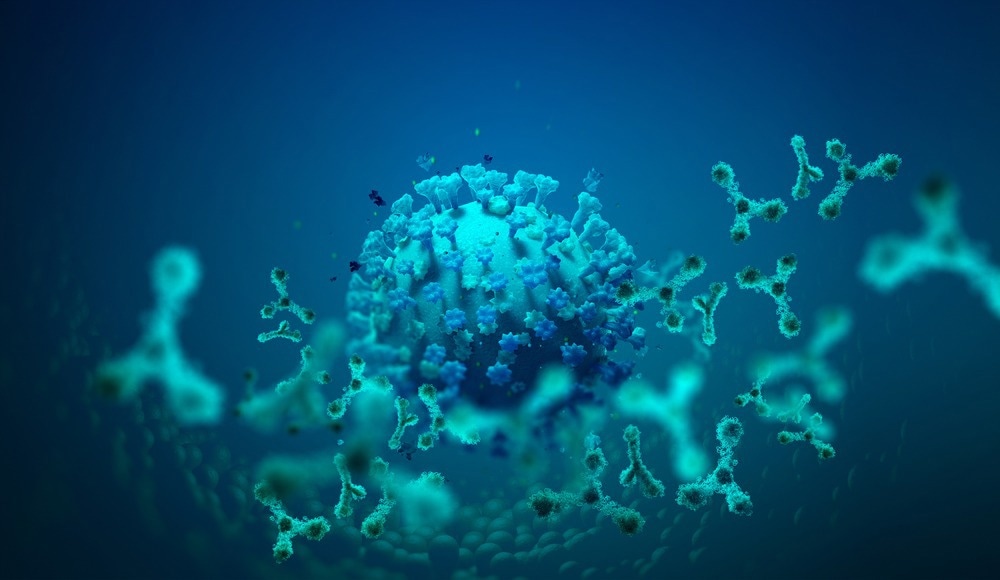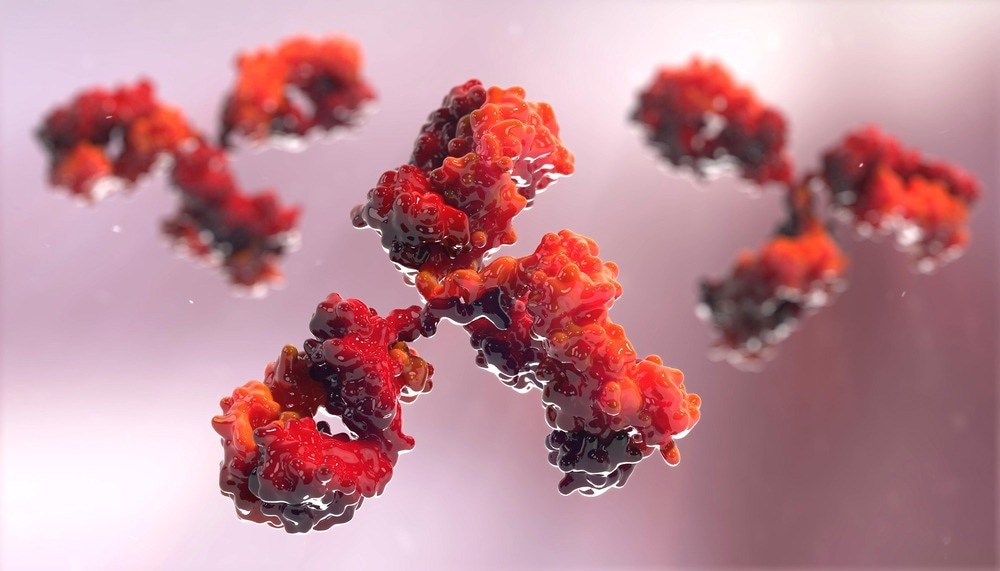The G.O.D. (Generation of Diversity) problem in immunology is a historical conundrum concerned with how the human body can generate antibodies against the numerous pathogens that exist. In theory, billions of pathogens can invade and infect the body.

Image Credit: Yurchanka Siarhei/Shutterstock.com
The immune response can be triggered for virtually any substance. The response of each antibody to a single antigen differs based on affinity, binding strength, and different specificity. This diversity of response is captured under the term ‘antibody repertoire’.
The immunoglobulin repertoire limits the antibody repertoire present in an individual. The number of B cells in the body and the exposure to different antigen types diversify the specificities present in the individual.
The human genome only contains around 25,000 genes which do not allow for the possibility of generating an infinite number of antibodies to tackle each potential pathogen. Scientists in the 1960s and 70s theorized that the infinite development of complementary antibodies is possible with a limited number of genes. Two theories were circulating at this time to help explain this dilemma:
- Instructional theory posits that all antibody molecules are initially produced the same. They then react to the shape of a recognized pathogen and learn its shape before destroying it.
- Clonal selection theory suggested the opposite: the B cell can only recognize a single pathogen. They can only respond to that pathogen by making a complementary shape to that single pathogen and rapidly dividing to overwhelm the target. This requires billions of genes for the antibodies to billions of potential pathogens.
Antibodies
Antibodies are Y-shaped immunoglobulin proteins that circulate in the blood. Upon binding, antibodies can disrupt pathogenic activity themselves or attach a label to the pathogen. Another immune system agent will recognize this label to induce a response.
On the two ends of their upper arms, antibodies have antigen (epitope) recognition sites called paratopes. This allows them to identify and destroy invading pathogens. Paratope sites perfectly complement the epitope of its target pathogen to allow binding to occur.
Each antibody is constructed of two light and two heavy immunoglobulin chains. Humans have two types of light chains, kappa and lambda – B cells can only express one or the other for the duration of their lifetime. Light chains have a C region (Constant) and V region (Variable) in tandem; the latter contains the specific antigen binding region.
Discovering the Mechanism of Diversity
Restriction enzymes are used to cut chromosomal DNA into fragments. Radio-labeled DNA probes are used to identify the presence of regions such as V-region and C-region (constant) sequences. These sequences are detected via the hybridization of the probes to complementary sequences in the fragments.
The V and C-region sequences were detected on separate DNA fragments in non-lymphoid cells but on the same fragment in B cells. This demonstrates that recombination has occurred within the B-lymphocyte lineage. Genetic rearrangement in cells other than gametes is known as somatic recombination.
The Genetic Lens
With the development of Genetic knowledge, the two theories evolved into:
- Germline Theory posits that the antibody repertoire is mostly inherited, with each potential immunoglobulin chain being encoded by its gene.
- Somatic Diversification Theory the antibody repertoire arises from a small number of inheritable V sequences, but these undergo genetic rearrangement to diversify within B cells.
The mechanism of producing a vast antibody repertoire was uncovered through cloning immunoglobulin genes. This demonstrated that a small set of genes encodes for the V region, but DNA alterations produce that variation during B cell development. Somatic hypermutation is still present in mature and active B cells.
Variability in the V region is caused by VDJ recombination; V, D, and J denote the names given to specific gene sequences in the immunoglobulin chains (namely Variable, Diversity, and Joining, respectively). Proteins that form the RAG1:RAG2 complexes recognize guiding sequences called Recombination Signal Sequences. Recombination can only occur in gene segments flanked by a 12-base pair RSS and 23-base pair RSS within a single chromosome.

Image Credit: urfin/Shutterstock.com
Modes of Recombination
Only one joining event is required to produce a light chain gene, whereas two are needed for a heavy chain gene. The most common recombination event is the deletion of DNA between two gene segments via ‘looping out’. This occurs when all of the DNA involved have the same orientation.
Another mode of recombination event can occur between gene segments of opposite orientations. When the two gene segments join together, the intermediate DNA is inverted and retained in the DNA. This type of recombination event is less common overall but is responsible for a substantial number of joins between V and J segments.
Remaining Generators of Genetic Diversity
Diversity in the V-region is obtained by combinations of two or three gene segments (each segment has its own plethora of versions) joined in varying orientations. The junctions of these joins can introduce diversity depending on the nucleotides present or removed during the recombination process. The antigen-binding site of the V-region introduces further diversity through the different combinations possible of heavy and light chains.
The possible antibody repertoire stretches to 3.5 x106 from combinatorial diversity alone, while the potential number of receptors expressed by naïve B cells extends to 1011. Point mutations are introduced into the genes of the V-region through somatic hypermutation. This introduces selective diversity to enhance binding to the complementary antigen.
Sources:
- Janeway CA Jr, Travers P, Walport M, et al. Immunobiology: The Immune System in Health and Disease. 5th edition. New York: Garland Science; 2001. The generation of diversity in immunoglobulins. Available from: https://www.ncbi.nlm.nih.gov/books/NBK27140/
- Owen, Judith A.; Punt, Jenni; Stranford, Sharon (2013). Kuby Immunology. New York, NY: W. H. Freeman and Company. p. 85. ISBN 9781429219198
- Redegeld, F., van der Heijden, M., Kool, M. et al. Immunoglobulin-free light chains elicit immediate hypersensitivity-like responses. Nat Med 8, 694–701 (2002). https://doi.org/10.1038/nm722
Further Reading
Last Updated: Mar 8, 2023